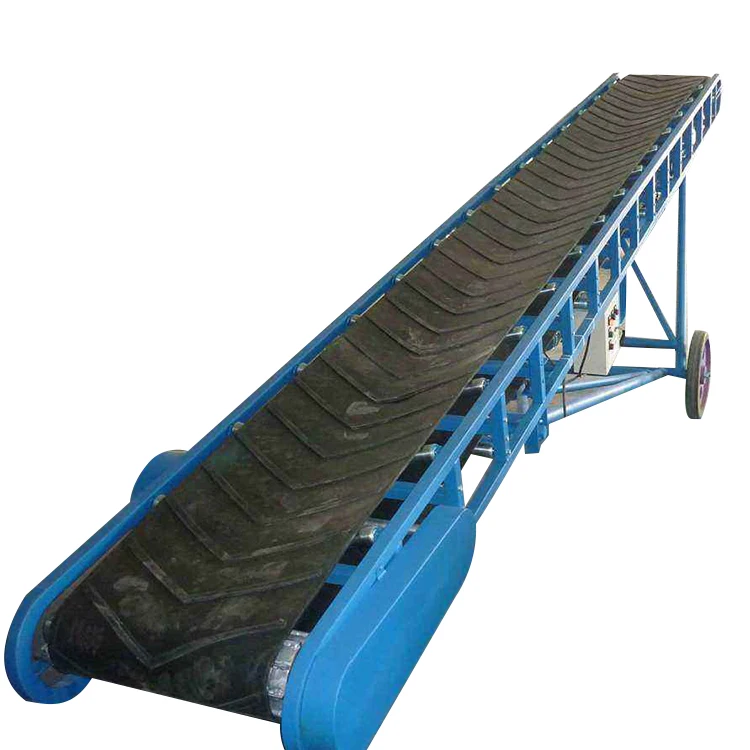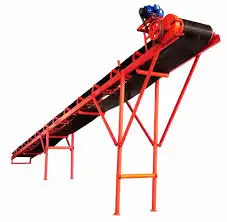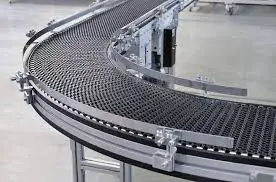Conveyor systems are used widespread across a range of industries due to the numerous benefits they provide.
- Conveyors are able to safely transport materials from one level to another, which when done by human labor would be strenuous and expensive.
- They can be installed almost anywhere, and are much safer than using a forklift or other machine to move materials.
- They can move loads of all shapes, sizes and weights. Also, many have advanced safety features that help prevent accidents.
- There are a variety of options available for running conveying systems, including the hydraulic, mechanical and fully automated systems, which are equipped to fit individual needs.
Conveyor systems are commonly used in many industries, including the Mining, automotive, agricultural, computer, electronic, food processing, aerospace, pharmaceutical, chemical, bottling and canning, print finishing and packaging. Although a wide variety of materials can be conveyed, some of the most common include food items such as beans and nuts, bottles and cans, automotive components, scrap metal, pills and powders, wood and furniture and grain and animal feed. Many factors are important in the accurate selection of a conveyor system. It is important to know how the conveyor system will be used beforehand. Some individual areas that are helpful to consider are the required conveyor operations, such as transportation, accumulation and sorting, the material sizes, weights and shapes and where the loading and pickup points need to be.
| Roller Type | Belt Speed m/s | Belt Width mm | |||||
| 500 | 650 | 800 | 1000 | 1200 | 1400 | ||
| Trough idler | Convey Capacity tph | ||||||
| 0.8 | 78 | 131 | — | — | — | — | |
| 1 | 97 | 104 | 278 | 435 | 655 | 891 | |
| 1.25 | 122 | 206 | 318 | 544 | 819 | 1115 | |
| 1.6 | 156 | 264 | 445 | 696 | 1048 | 1427 | |
| 2 | 191 | 323 | 546 | 853 | 1284 | 1748 | |
| 2.5 | 232 | 391 | 551 | 1033 | 1556 | 2118 | |
| 3.15 | 824 | 1233 | 1858 | 2528 | |||
| 4 | 2202 | 2995 | |||||


 C
C
conveyor belt is the main component of conveyor, which can start and load materials.
Conveyor belts are generally composed of three parts: skeleton material, overlay and laminate material (hereinafter referred to as "overlay layer") and underlying material. Among them, skeleton material is the key to the carrying capacity of conveyor belts, and is the decisive factor for the guiding, loading ability and extensibility of conveyor belts; overlay material is the assurance of normal operation of conveyor belts, with maintenance skeleton material and conveyor material. Increase friction coefficient, absorb material impact, anti-wear and other effects, the characteristics of conveyor belts such as high temperature resistance, wear resistance, anti-static, etc. all depend on the characteristics of the coating material; the effect of undercutting material is to make the framework material and the coating have outstanding bonding strength.
In agriculture, industry and mining enterprises and transportation industry, it is widely used to transport various solid bulk and powder materials or finished goods. It can be connected, high efficiency, high inclination transportation, safe operation, simple operation, simple repair, low freight, shorten the transportation interval, reduce the cost of construction, save manpower and material resources, which brings great convenience to manufacturers. People can be more convenient and labor-saving.






